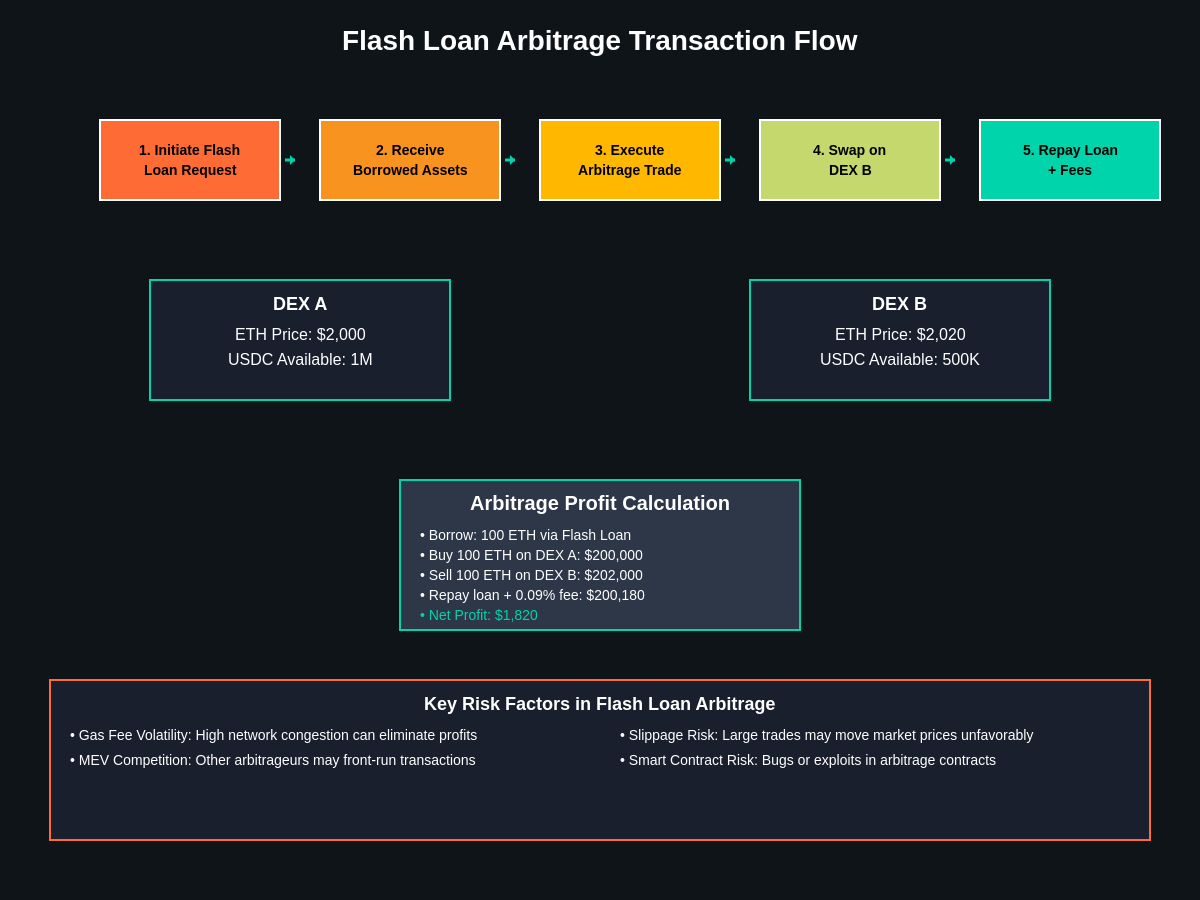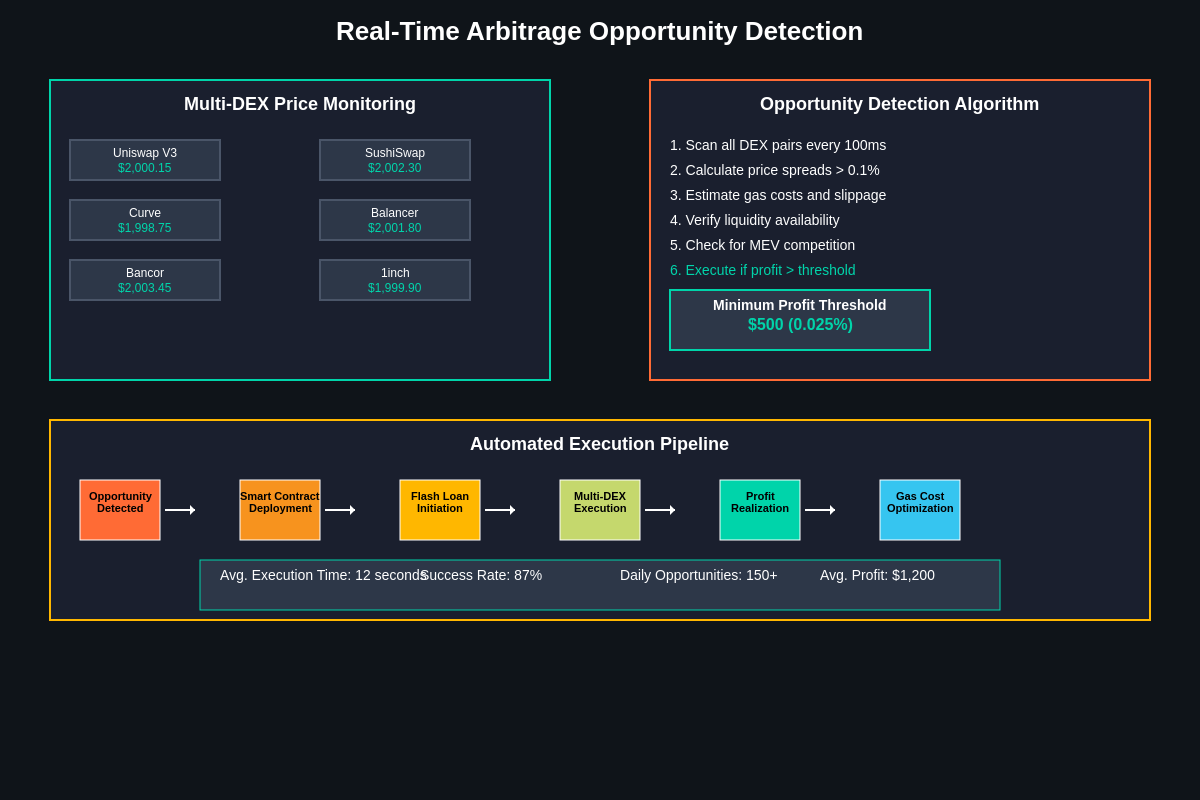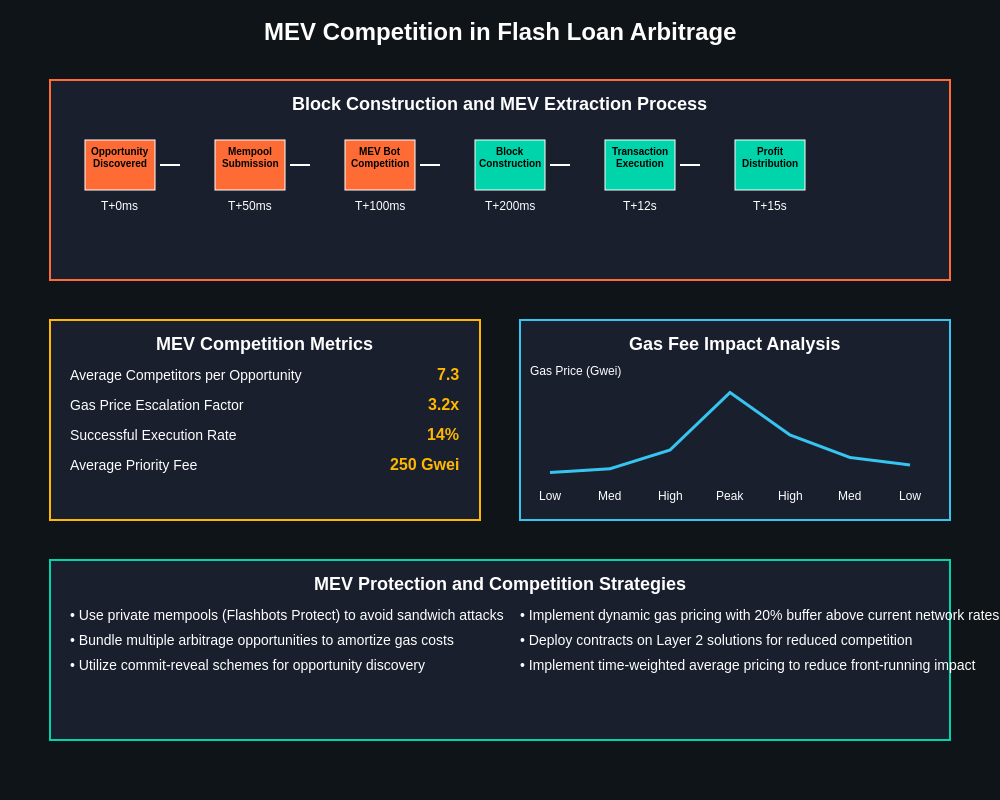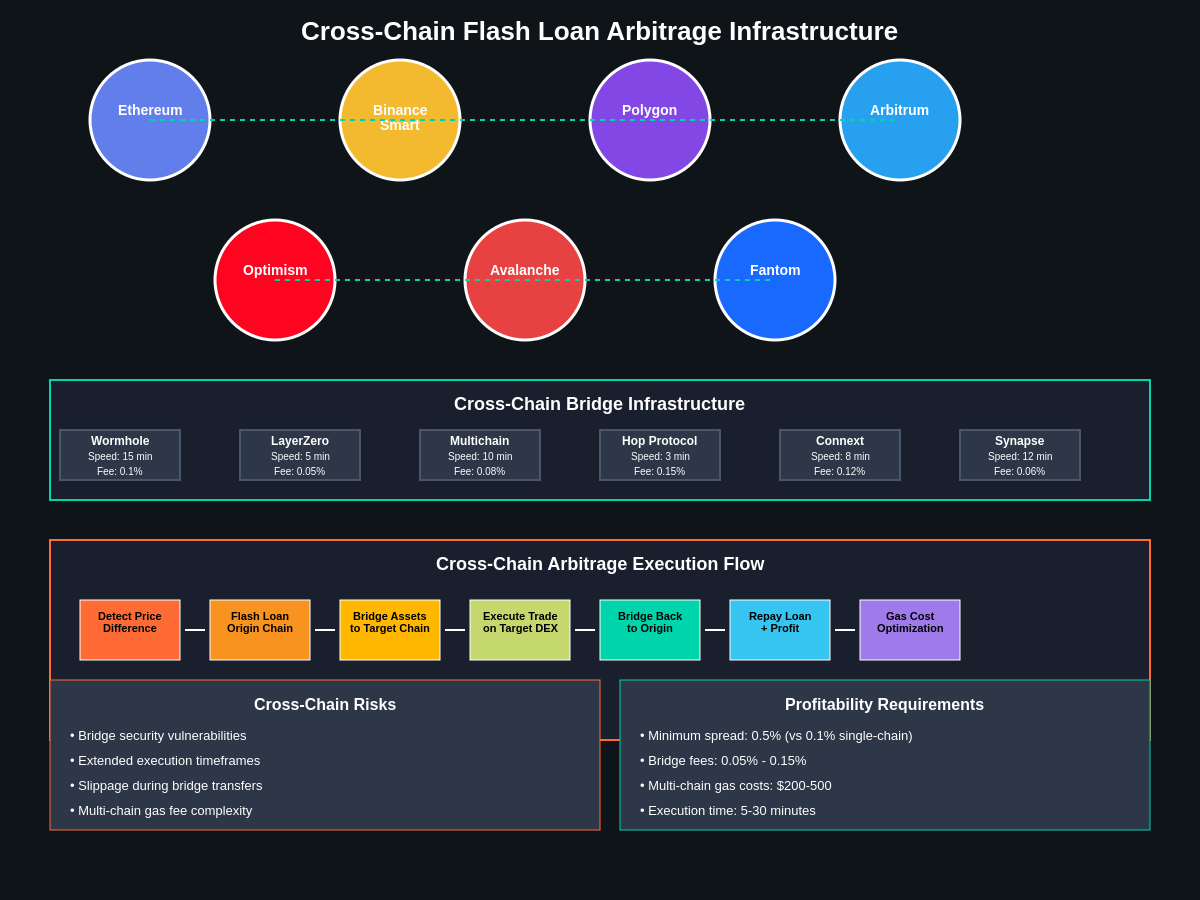The Revolution of Instant Capital Access
Flash loans have fundamentally transformed the landscape of arbitrage trading in decentralized finance, enabling traders to execute sophisticated strategies without requiring significant upfront capital. This revolutionary financial instrument allows users to borrow substantial amounts of cryptocurrency within a single transaction, execute arbitrage opportunities across different protocols, and repay the loan with profits all in one atomic operation. The technology has democratized access to arbitrage opportunities that were previously available only to well-capitalized institutional traders.

Access to comprehensive flash loan analytics and arbitrage tracking tools has become essential for traders seeking to identify and capitalize on these opportunities in real-time market conditions.
The emergence of flash loan technology represents a paradigm shift in how arbitrage trading operates within decentralized finance ecosystems, removing traditional barriers to entry while simultaneously creating new opportunities for profit generation. Unlike conventional arbitrage strategies that require traders to maintain substantial capital reserves across multiple platforms, flash loans enable the execution of complex multi-step arbitrage strategies using borrowed funds that exist only for the duration of a single blockchain transaction.
Understanding Flash Loan Mechanics in Arbitrage
Flash loan arbitrage operates on the principle of atomic transactions, where multiple operations including borrowing, trading, and repayment occur within a single blockchain transaction that either succeeds completely or fails entirely with no partial execution. This mechanism ensures that borrowed funds are always repaid within the same transaction, eliminating counterparty risk for lenders while enabling traders to access liquidity without collateral requirements.
The technical implementation of flash loan arbitrage typically involves smart contracts that coordinate interactions between multiple decentralized exchanges, automated market makers, and lending protocols to identify and exploit price discrepancies across different platforms. These smart contracts must be carefully designed to handle various edge cases, including slippage, gas fee fluctuations, and potential MEV extraction by block producers.
Advanced arbitrage strategies often incorporate sophisticated routing algorithms that can identify optimal paths across multiple decentralized exchanges and liquidity pools to maximize profit margins while minimizing transaction costs. Real-time price monitoring across DeFi protocols becomes crucial for identifying arbitrage opportunities before they are eliminated by competing arbitrageurs.

The complexity of flash loan arbitrage extends beyond simple price discrepancies to include more sophisticated strategies such as liquidation arbitrage, where traders use flash loans to purchase liquidated collateral at discounts and immediately sell it at market prices. These strategies require deep understanding of various DeFi protocols and their liquidation mechanisms to execute successfully.
Market Efficiency and Price Discovery Impact
Flash loan arbitrage has significantly improved market efficiency across decentralized finance protocols by rapidly eliminating price discrepancies that would otherwise persist for extended periods. This increased efficiency benefits all market participants by ensuring that asset prices remain closely aligned across different platforms, reducing the cost of price discovery and improving overall market liquidity.
The speed at which flash loan arbitrage operates has compressed the time windows during which profitable arbitrage opportunities exist, creating a highly competitive environment where success depends on sophisticated technology, optimal gas price strategies, and efficient smart contract execution. This competition has led to the development of increasingly advanced arbitrage bots and strategies that can identify and execute trades within milliseconds of opportunity identification.

However, the proliferation of flash loan arbitrage has also contributed to increased network congestion during periods of high volatility, as multiple arbitrageurs compete to execute similar strategies simultaneously. This congestion can result in higher transaction fees and longer confirmation times, potentially affecting the profitability of arbitrage strategies and impacting other network users.
The impact on price discovery extends beyond simple arbitrage to include more complex scenarios where flash loan strategies influence the pricing mechanisms of automated market makers and other DeFi protocols. Understanding these dynamics requires analysis of real-time market data and liquidity flows across multiple protocols simultaneously.
Technology Infrastructure and Smart Contract Architecture
The technology infrastructure supporting flash loan arbitrage has evolved rapidly to accommodate increasingly sophisticated trading strategies and higher transaction volumes. Modern arbitrage platforms utilize advanced smart contract architectures that can interact with multiple protocols simultaneously while optimizing for gas efficiency and execution speed.
Smart contract security represents a critical concern in flash loan arbitrage, as vulnerabilities in arbitrage contracts can result in significant financial losses or exploitation by malicious actors. The complexity of interactions between multiple protocols creates numerous potential attack vectors that must be carefully considered during contract development and auditing processes.
Gas optimization techniques have become increasingly important as network fees can significantly impact arbitrage profitability, particularly for smaller opportunities. Advanced arbitrage systems implement dynamic gas pricing strategies and transaction batching to minimize costs while maintaining competitive execution speeds.
The integration of oracle systems for real-time price feeds and the implementation of circuit breakers to prevent excessive slippage represent additional technological considerations that modern arbitrage systems must address. These systems must balance the need for speed with the requirement for accurate price information and risk management.
Risk Management and Capital Efficiency
Flash loan arbitrage introduces unique risk management challenges that differ significantly from traditional arbitrage strategies. While the atomic nature of flash loan transactions eliminates certain risks such as counterparty default, new risks emerge including smart contract vulnerabilities, oracle manipulation, and sandwich attacks by MEV extractors.
Capital efficiency in flash loan arbitrage is dramatically improved compared to traditional methods, as traders can execute arbitrage strategies without tying up capital across multiple platforms. This efficiency enables the deployment of capital in other strategies simultaneously while still capitalizing on arbitrage opportunities as they arise.
However, the gas fees associated with complex flash loan transactions can represent a significant portion of potential profits, particularly for smaller arbitrage opportunities. Successful arbitrage strategies must incorporate sophisticated models for predicting and optimizing gas costs to maintain profitability across different market conditions.
Risk assessment for flash loan arbitrage requires understanding of multiple protocol risks simultaneously, as failures in any component of a multi-step arbitrage strategy can result in transaction failure and loss of gas fees. This complexity necessitates comprehensive testing and simulation of arbitrage strategies under various market conditions.
Regulatory Considerations and Compliance Challenges
The regulatory landscape surrounding flash loan arbitrage remains largely undefined in most jurisdictions, creating uncertainty for traders and platform operators. The automated nature of many flash loan arbitrage strategies raises questions about the applicability of traditional trading regulations and the responsibilities of smart contract developers.
Compliance challenges in flash loan arbitrage include transaction reporting requirements, particularly in jurisdictions where cryptocurrency trading is subject to capital gains taxation. The high frequency and automated nature of flash loan arbitrage can generate thousands of taxable events, creating significant record-keeping and reporting burdens for traders.
The potential for flash loan arbitrage to impact market stability has attracted attention from financial regulators, particularly in cases where large arbitrage operations have contributed to significant price movements or protocol instabilities. Understanding these regulatory considerations is essential for sustainable participation in flash loan arbitrage markets.
Anti-money laundering and know-your-customer requirements present additional challenges for flash loan arbitrage platforms, particularly those operating across multiple jurisdictions with different regulatory requirements. The pseudonymous nature of blockchain transactions complicates compliance efforts while potentially creating regulatory exposure for platform operators.
Economic Impact on DeFi Protocols
Flash loan arbitrage has created both benefits and challenges for DeFi protocols, improving market efficiency while potentially extracting value from other users through MEV extraction and front-running strategies. The net economic impact varies significantly across different protocols and market conditions.
Liquidity provision in automated market makers has been affected by flash loan arbitrage, as arbitrageurs can quickly eliminate profitable opportunities for traditional liquidity providers. This dynamic has led to the development of more sophisticated liquidity provision strategies and the implementation of MEV protection mechanisms by some protocols.
The fee revenue generated by flash loan arbitrage can represent a significant source of income for lending protocols and decentralized exchanges, creating economic incentives for platforms to support and facilitate arbitrage activities. However, this revenue must be balanced against potential negative impacts on other user experiences and protocol stability.
Protocol governance has increasingly focused on managing the impact of flash loan arbitrage through mechanisms such as time delays, minimum holding periods, and MEV redistribution systems. These governance decisions reflect the ongoing evolution of DeFi protocols in response to arbitrage activities and their economic implications.
Evolution of Arbitrage Strategies and Techniques
The evolution of flash loan arbitrage strategies has progressed from simple price discrepancy exploitation to sophisticated multi-protocol operations that can involve dozens of different DeFi platforms in a single transaction. This evolution reflects both technological advances and the increasing complexity of the DeFi ecosystem.
Statistical arbitrage using flash loans has emerged as a more sophisticated approach that identifies temporary price deviations based on historical patterns and market microstructure analysis. These strategies require significant computational resources and advanced market analysis capabilities to identify profitable opportunities.
Cross-chain arbitrage using flash loans and bridge protocols represents the frontier of arbitrage strategy development, enabling traders to exploit price discrepancies across different blockchain networks. These strategies involve additional risks and complexities related to bridge security and cross-chain communication protocols.

The integration of artificial intelligence and machine learning techniques in flash loan arbitrage has enabled the development of adaptive strategies that can learn from market conditions and optimize performance over time. These systems can process vast amounts of market data to identify subtle patterns and opportunities that manual analysis might miss.
Impact on Traditional Finance and Market Structure
Flash loan arbitrage has begun to influence traditional financial markets as institutional investors and hedge funds develop strategies that bridge centralized and decentralized finance. This cross-over effect demonstrates the growing maturation and integration of DeFi protocols with traditional financial infrastructure.
The speed and efficiency of flash loan arbitrage have set new benchmarks for trade execution and market efficiency that traditional financial markets are beginning to emulate through technological upgrades and process improvements. This influence extends to areas such as high-frequency trading algorithms and market making strategies.
Market microstructure in both centralized and decentralized exchanges has been influenced by flash loan arbitrage mechanisms, leading to changes in how exchanges design their matching engines, fee structures, and liquidity provision incentives. These changes reflect the competitive pressure created by highly efficient arbitrage mechanisms.
The integration of traditional financial instruments with flash loan arbitrage strategies through tokenized assets and synthetic derivatives has created new hybrid trading strategies that combine the efficiency of DeFi with the scale and stability of traditional markets.
Technical Challenges and Infrastructure Limitations
The technical challenges facing flash loan arbitrage include scalability limitations of blockchain networks, particularly during periods of high network congestion when gas fees can eliminate profit margins for all but the largest arbitrage opportunities. These limitations have driven innovation in layer-2 solutions and alternative blockchain architectures.
Latency optimization in flash loan arbitrage requires sophisticated infrastructure including direct blockchain node access, optimized smart contract code, and strategic placement of computational resources relative to blockchain validation networks. These technical requirements create barriers to entry for casual arbitrageurs while favoring well-resourced professional operations.
Smart contract complexity in advanced arbitrage strategies approaches the gas limits of blockchain networks, requiring careful optimization and sometimes the use of multiple transactions or proxy contracts to execute complex strategies. This complexity increases both development costs and execution risks for arbitrage operations.
The reliability of oracle systems and external data feeds represents a critical infrastructure dependency for flash loan arbitrage, as price feed failures or manipulation attempts can result in significant losses or missed opportunities. This dependency has led to the development of multi-oracle systems and decentralized price aggregation mechanisms.
Future Developments and Innovation Trends
The future of flash loan arbitrage is likely to be shaped by improvements in blockchain scalability, cross-chain interoperability, and the integration of traditional financial markets with DeFi protocols. These developments will create new opportunities while potentially changing the fundamental economics of arbitrage trading.
Layer-2 solutions and alternative blockchain architectures promise to reduce transaction costs and increase execution speed for flash loan arbitrage, potentially making smaller arbitrage opportunities profitable and increasing overall market efficiency. These improvements may also enable more complex multi-step arbitrage strategies that are currently limited by gas costs.
The development of standardized interfaces and protocols for cross-chain arbitrage will likely simplify the technical implementation of multi-blockchain strategies while reducing the risks associated with bridge protocols and cross-chain communication. This standardization could significantly expand the scope of arbitrage opportunities available to flash loan traders.
Artificial intelligence and machine learning integration in flash loan arbitrage will continue to evolve, potentially leading to fully autonomous arbitrage systems that can adapt to changing market conditions and optimize strategies in real-time. These systems may eventually operate with minimal human intervention while generating consistent returns through sophisticated pattern recognition and execution algorithms.
Educational Requirements and Skill Development
Success in flash loan arbitrage requires a combination of technical skills, financial market understanding, and risk management expertise that represents a significant learning curve for new participants. The complexity of modern arbitrage strategies necessitates continuous education and skill development to remain competitive.
Programming skills in Solidity and other smart contract languages have become essential for developing custom arbitrage strategies, while proficiency in financial analysis and market microstructure theory is necessary for identifying profitable opportunities. The intersection of these technical and financial skills creates a specialized knowledge domain that requires dedicated study and practice.
Risk management education specific to DeFi protocols and flash loan arbitrage is crucial for avoiding common pitfalls that can result in significant losses. Understanding the failure modes of different protocols, the risks associated with oracle manipulation, and the impact of network congestion on strategy performance requires specialized knowledge that extends beyond traditional trading education.
The rapidly evolving nature of DeFi protocols and arbitrage techniques requires continuous learning and adaptation to new technologies, regulations, and market conditions. Successful arbitrage traders must maintain awareness of protocol updates, security vulnerabilities, and emerging opportunities across multiple blockchain ecosystems simultaneously.
Environmental and Sustainability Considerations
The environmental impact of flash loan arbitrage depends largely on the underlying blockchain infrastructure, with Ethereum-based arbitrage contributing to the network’s energy consumption while layer-2 solutions and alternative blockchains offer more sustainable options. As environmental concerns become increasingly important in financial markets, the sustainability of arbitrage strategies will likely become a significant consideration.
The efficiency improvements created by flash loan arbitrage may actually reduce overall energy consumption per unit of financial activity by eliminating inefficient price discrepancies more quickly and reducing the number of transactions required to achieve market equilibrium. This efficiency gain must be balanced against the increased transaction volume generated by automated arbitrage activities.
Sustainability initiatives in blockchain networks, including the transition to proof-of-stake consensus mechanisms and the development of carbon-neutral protocols, will likely influence the future development of flash loan arbitrage strategies and platform selection decisions by environmentally conscious traders.
The development of sustainable arbitrage strategies that consider environmental impact alongside financial returns represents an emerging trend that may influence the evolution of flash loan arbitrage platforms and the preferences of institutional investors entering the DeFi space.
Disclaimer: This article is for informational purposes only and does not constitute financial advice. Flash loan arbitrage involves significant risks including smart contract vulnerabilities, impermanent loss, and regulatory uncertainty. Cryptocurrency trading and DeFi participation carry the risk of total loss of invested capital. Always conduct your own research and consider consulting with qualified financial advisors before engaging in any trading activities. Past performance does not guarantee future results, and the rapidly evolving nature of DeFi protocols means that strategies and risks can change quickly.